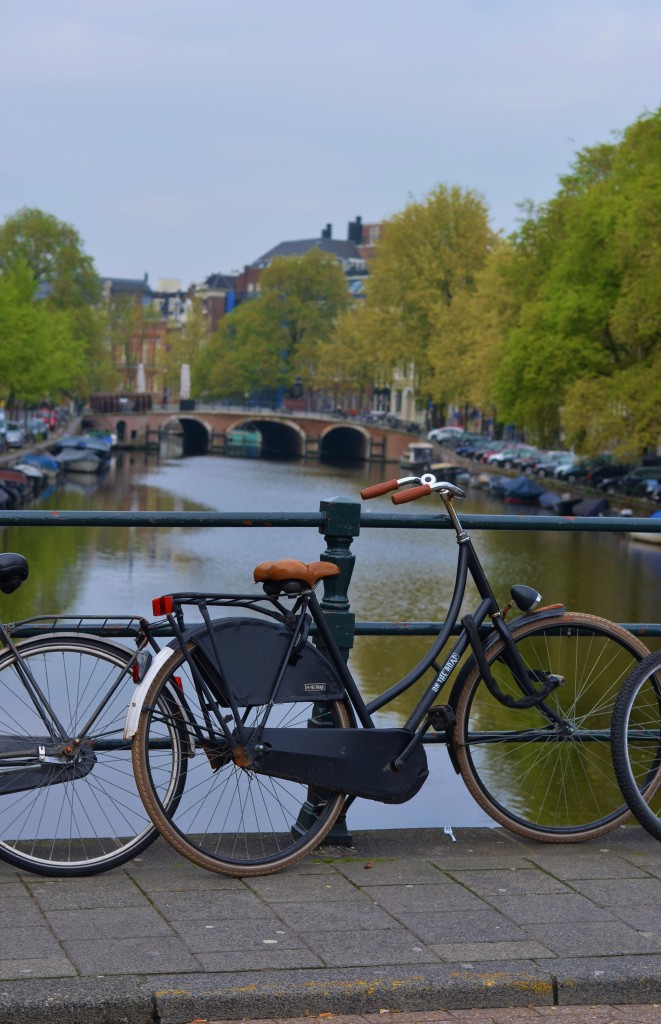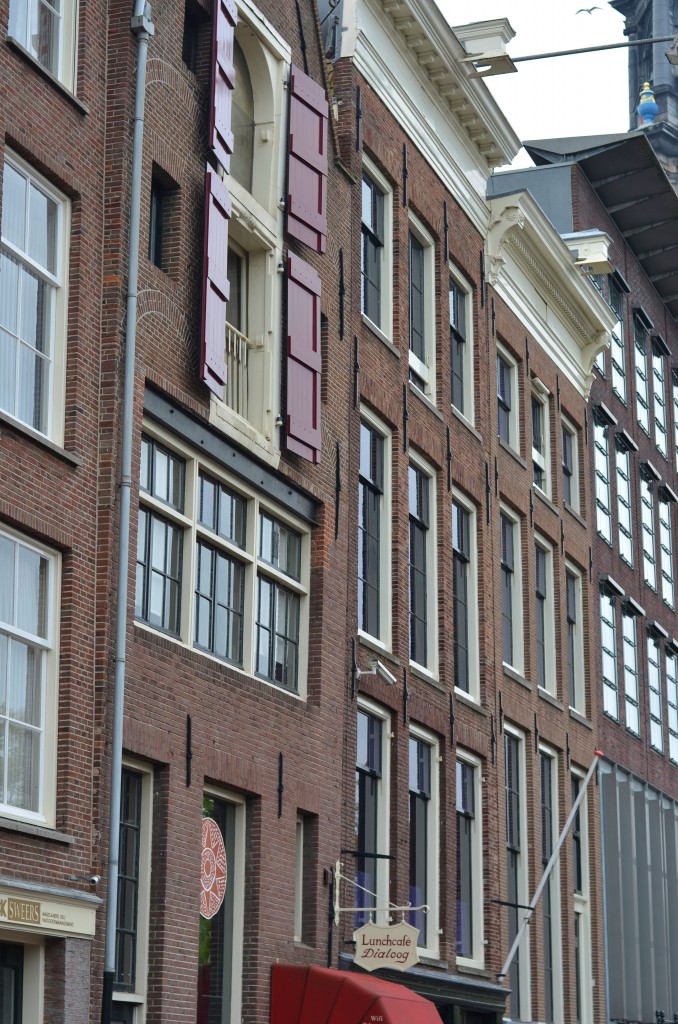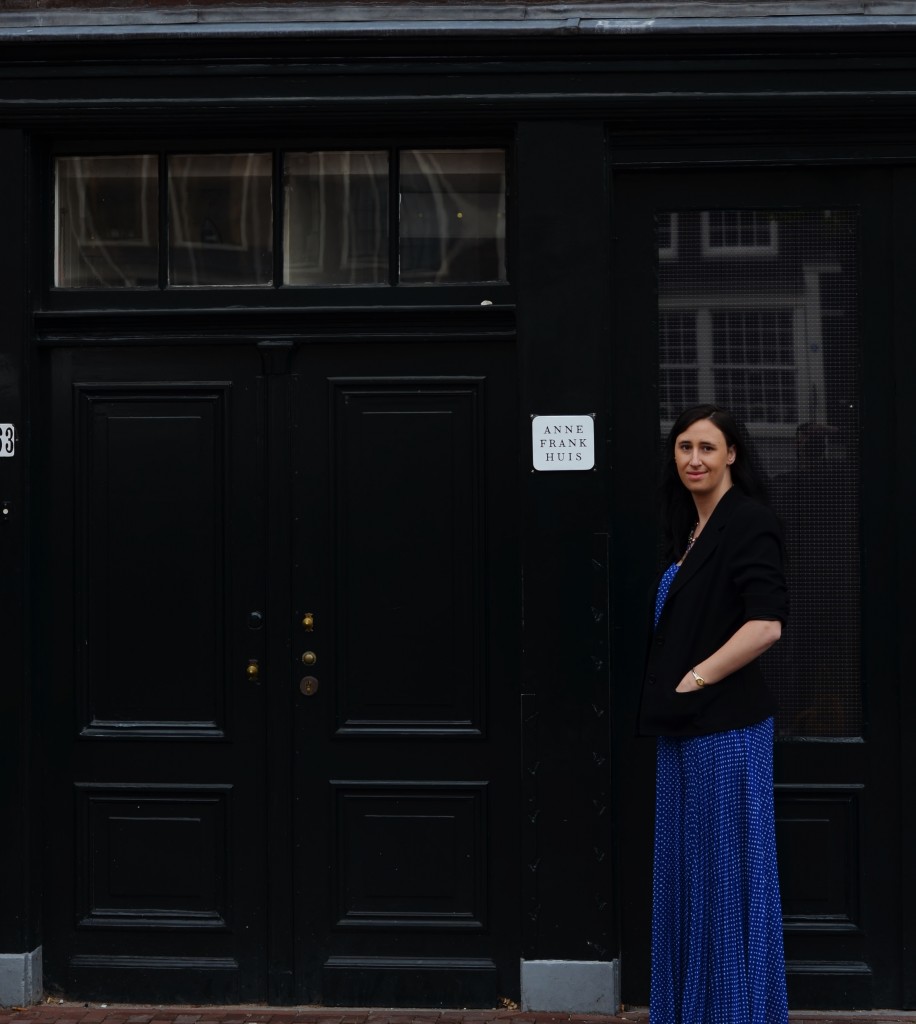Field Trip Friday: The Anne Frank House
The peaceful canal just next to the Anne Frank House Museum. It’s hard to believe so much sadness and terror happened right here, on this street.
Visiting the Anne Frank House was my biggest motivation for wanting to go to Amsterdam. Anne Frank’s diary is one of those books that just sticks to you. Anne was such a beautiful girl, full of so much life, and spunk and promise. I didn’t want to come all the way to Europe and not show her and her story the respect of visiting the Annex she called home for the last years of her life.
Anne Frank was born not to far from the city we call home now, in Frankfurt am Main in 1929. As a Jewish family, the Franks were discriminated against in Germany and moved to Amsterdam with the hopes of keeping their family safe. However, in 1940, Germany invaded the Netherlands, and they soon realized they would face deportation if they did not go into hiding.
Anne’s Father, Otto, was the founding owner of a company in Amsterdam, Opekta, which manufactured products to make Jam. Along with his business associate, another Jewish man, Hermann van Pels, he prepared a plan for their two families to hide and live safely in an annex above the warehouse of Opekta, on a canal facing street in downtown Amsterdam. When a letter came for Anne’s older sister Margot to report for a work camp, the family knew the time had come to “disappear” and go into hiding rather than let Margot go back to Germany.
In July of 1942, they moved into the Annex, and this is where they lived for the next 761 days. I wish so badly I had been allowed to take pictures inside the house so I could show you what it was like. When you enter the museum, you first see pictures of Anne and her family, and watch a short video narrated with Anne’s words from her diary. The tone is immediately somber. As we walked through the home, you could have heard a pin drop, despite us being surrounded by other tourists from every walk of life.
Prinsengracht 263, the row house in the middle
You start on the ground floor, walking through what used to be the Opekta warehouse. The work continued on here, with most of the Opekta employees unaware of the people silently living just above their heads. From the warehouse, you climb a flight of stairs and find yourself in Otto Frank’s offices. Here, the “helpers” continued on working. Johannes Kleiman and Victor Kugler continue running Opekta during the war, along with the Gies family and Bep Voskuijl who also work in the offices and smuggle supplies, food and educational materials to the families in hiding.
At the back of these offices is a door that leads to a secret annex, or a home in the back of the business. Otto Frank had a bookcase installed instead of the door to hide the entrance. That bookcase is still there today. It is a simple wooden case, nothing big or heavy, maybe standing 5 feet high, and one foot deep. It is hinged, to open wide, and has a small handle on the backside to be pulled closed and locked from the inside. To climb through, you have to step up and over the lower portion of the wall, while ducking your head. It’s a small space, and as I climbed into the Annex, I immediately felt too big to be standing there.
The spaces are all narrow, the air is still, and the rooms are too dark for it to be daylight outside. I can only imagine how awful it must have felt to know Anne lived in this space day in and day out without the promise of being able to leave. Even the stairway is narrow, and more like a ladder than anything else.
During the war, the Annex was emptied of all its furnishings. Otto Frank requested that it remain empty, and so the rooms are all bare with the exception of a few markings and pictures left on the wall. In one room, Otto marked the girls growth with a pencil…. they both grew inches without the light of the sun.
Anne’s room still has all her pictures and magazine clippings on the wall. She used glue to decorate the space, much as teenagers do today. I couldn’t help but smile to see all her hopes and dreams right there on her bedroom walls. It was heartening to see the things she did to bring more beauty to her little space in the Annex. The most touching part of the tour was to see the latter up to the attic, where the one uncovered window could be seen.
This time of year, the blue sky and branches of a tree with its green leaves looked happy over the dark room. This is the point on the tour where I could no longer keep the tears from falling. We came down from the Annex to see the last of the museum, pictures of the families in hiding and details of their sad fate.
Otto Frank is the only one that survives the war. In August of 1944, someone betrays them, and the SS quickly come and arrest all of them. They are taking to Auschwitz, and from there, are split up and die one by one. After the war, Otto, who was separated from his family, looked frantically for his girls only to find that Anne and Margot died in Bergen-Belsen one month before the liberation of the camp.
The final room of the museum contains Anne’s diary, both the first red plaid book, and all the following journals and pages and pages of rewrites. She worked so hard to preserve this story, and I am so glad to have been able to pay my respects to her and her family in this little home above a canal in Amsterdam.
This Field Trip Friday did not include my children, but I would have brought them with me had I the chance to. I am planning a day trip back with Bug next year before we move because I feel like this is something too important for him to miss. If you visit, you can purchase tickets online and save yourself waiting time. If you don’t plan on visiting Europe, you can still do a virtual tour of the Anne Frank house on the museum’s website.







Thank you for sharing. What a terrible tragedy and what an inspiring little girl. I agree… it is only just to hear the story she worked so hard to preserve so it could one day be shared.